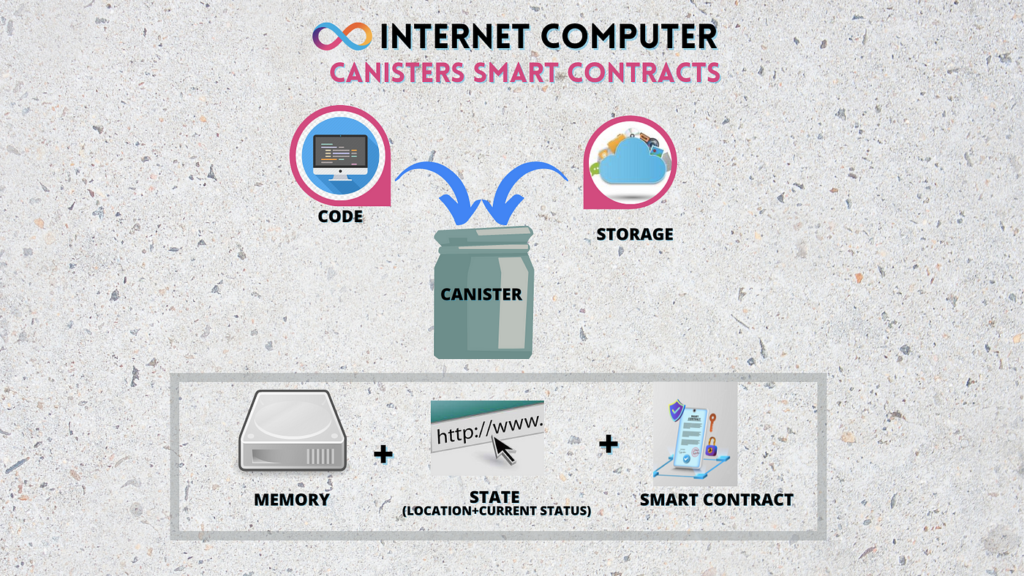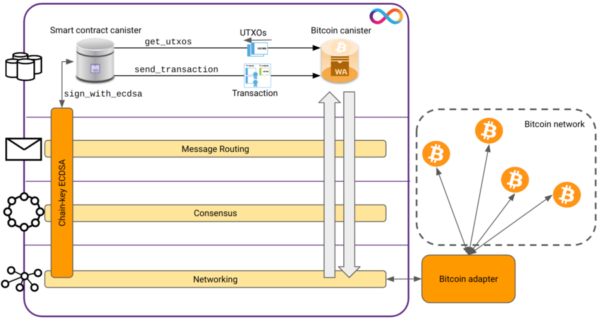Introduction to Chain Key Signatures
In the world of blockchain technology, innovation is key to staying ahead of the curve One such innovation with canisters that has gained significant attention is chain-key signatures. Chain key signatures are cryptographic primitives that offer a new level of security and efficiency to canister smart contracts and IC multi-subnet architecture. In this article, we will delve into the potential of chain key signatures and explore how they can revolutionize the way we interact with blockchain networks.
Table of Contents
🌟 Your Secret Careerist Invite! 🚀
Understanding Canister Smart Contracts
Before we get into the intricacies of chain key signatures, it is important to understand canister smart contracts. Canister smart contracts are self-contained units of code that run on the Internet computer (IC) network. They enable decentralized applications (dApps) to execute transactions and interact with other canisters in a secure and transparent manner. Canister smart contracts have gained popularity due to their ability to provide trustless and tamper-proof execution of code, making them an integral part of the blockchain ecosystem.
The Importance of IC Multi-Subnet Architecture
The IC multi-subnet architecture is a key component of the Internet computer network. It allows for the creation of multiple subnets, each with its own set of canisters and smart contracts. This architecture enables scalability and parallel execution of transactions, making the Internet computer network more efficient and robust. With IC multi-subnet architecture, developers can build complex decentralized applications that can handle a large number of users and transactions without compromising on performance.

How Chain Key Signatures Enhance Canister Smart Contracts
Chain key signatures enhance canister smart contracts by introducing a new level of security and efficiency. Unlike traditional digital signatures, chain key signatures leverage the properties of the blockchain itself to provide cryptographic security. This means that the signatures are tied to a specific chain of blocks, making them resistant to forgery and tampering. Additionally, chain key signatures are more efficient in terms of computation and storage requirements, making them ideal for resource-constrained environments like the Internet computer network.
💼 Show your crypto flair! 💫 Dive in here 👇 for our special merchandise 🎉
Benefits of Using Chain Key Signatures in IC Multi-Subnet Architecture
The benefits of using chain key signatures in an IC multi-subnet architecture are manifold. Chain-key signatures provide a higher level of security compared to traditional digital signatures. By leveraging the blockchain’s immutability, chain key signatures ensure that transactions and interactions between canisters are tamper-proof and verifiable. Chain key signatures offer improved efficiency by reducing the computational and storage overhead associated with traditional digital signatures. This makes them ideal for scaling decentralized applications on the Internet computer network. Lastly, chain key signatures enable interoperability between different subnets, allowing for seamless communication and collaboration between canisters across the network.
Elevate Your Tech Career! 🚀
Case Studies: Successful Implementations of Chain Key Signatures
The transformative potential of chain key signatures can be best understood through real-world case studies. Several projects have successfully implemented chain key signatures in their canister smart contracts and IC multi-subnet architecture, showcasing the practical benefits of this innovative technology. One such example is the implementation of chain key signatures in a decentralized finance (DeFi) application on the Internet computer network.
By using chain key signatures, the application was able to provide secure and efficient financial transactions while maintaining the transparency and immutability of the blockchain. Another case study involves the integration of chain key signatures in a supply chain management system. By leveraging the cryptographic security of chain key signatures, the system was able to ensure the authenticity and traceability of goods throughout the supply chain, reducing the risk of fraud and counterfeiting.
Best Practices for Implementing Chain Key Signatures
Implementing chain key signatures in canister smart contracts and IC multi-subnet architectures requires careful consideration of best practices. Developers should ensure that the chain key signatures are properly generated and stored securely. This includes using trusted random number generators and secure key storage mechanisms.
It is important to regularly update the chain key signatures to mitigate the risk of key compromise or cryptographic attacks. Additionally, developers should thoroughly test the implementation of chain key signatures to ensure their compatibility and interoperability with other components of the system. If you want to use chain key signatures in canister smart contracts and the IC multi-subnet architecture, you need to make sure that the implementation details are well documented and communicated.

Challenges and Potential Limitations of Chain Key Signatures
While chain key signatures offer numerous benefits, there are also challenges and potential limitations that need to be considered. One challenge is the complexity of implementing chain key signatures, especially for developers who are new to the technology. The cryptographic primitives and algorithms involved require a deep understanding and expertise in the field.
💼 Master Sales Engineering essentials! 🛠️ these concise courses cover it all. Elevate your career with practical knowledge and hands-on experience
Another challenge is the potential impact on performance and scalability. As chain key signatures introduce additional computation and storage requirements, there is a need to carefully optimize the implementation to ensure efficient execution of canister smart contracts and IC multi-subnet architecture. The adoption of chain key signatures may face resistance from traditional stakeholders who are accustomed to more established cryptographic methods.
Future Developments and Advancements in Chain Key Signatures
The field of chain key signatures is still relatively nascent, and there is immense potential for future developments and advancements. One area of research is the optimization of chain key signature algorithms to further improve efficiency and scalability.Efforts are being made to enhance the usability and accessibility of chain key signatures, making them more developer-friendly and easier to integrate into existing systems.
💼 Elevate your QA game with these Automation Courses! 🚀 Master scripting, testing frameworks, and more. Take the next step in your career journey now!
Furthermore, research is being conducted to explore the integration of chain key signatures with other cryptographic techniques, such as zero-knowledge proofs, to provide even stronger security guarantees. As the technology continues to evolve, we can expect to see more innovative use cases and applications of chain key signatures in the realm of canister smart contracts and IC multi-subnet architecture.
Final thought: The Transformative Potential of Chain Key Signatures in the World of Blockchain Technology
Chain key signatures have the potential to be a game-changer for canister smart contracts and IC multi-subnet architecture. By providing a higher level of security and efficiency, chain key signatures enable the creation of robust and scalable decentralized applications on the Internet computer network. The successful implementation of chain key signatures in various real-world use cases showcases their transformative potential in revolutionizing how we interact with blockchain technology.
As the field of chain key signatures continues to evolve and mature, we can expect to see even more innovative applications and advancements that will shape the future of the blockchain ecosystem. It is imperative for developers and stakeholders to stay informed and embrace the potential of chain key signatures to unlock the full benefits of blockchain technology.
Embrace the transformative potential of chain key signatures in your blockchain projects. Stay informed and explore the possibilities of this innovative technology to enhance the security and efficiency of your canister smart contracts and IC multi-subnet architecture. Together, let’s shape the future of blockchain technology.




